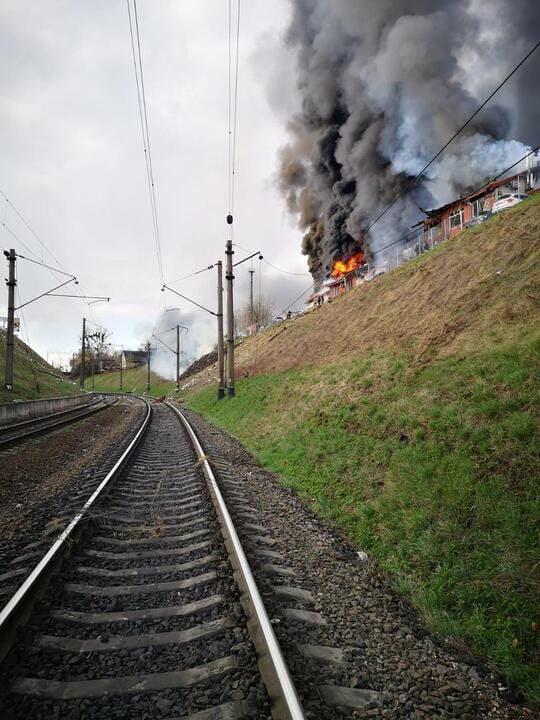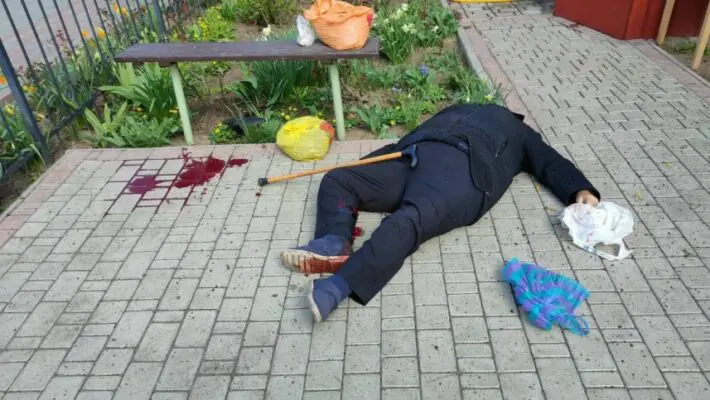Medical First Responder Training for Humanitarian Workers and Volunteers
First aid, trauma care, evacuation, collaboration
First aid, trauma care, evacuation, collaboration
In 2024, we will again provide various medical first aid trainings to civilian humanitarian volunteers who are helping Ukraine, especially for those going to high-risk areas.
Humanitarian volunteers are a very important part of the aid chain in Ukraine. More than 40% of Ukrainians depend on some form of humanitarian aid: from food and clothing to medical supplies and generators. The Russian army continues to bombard the country with missiles, drones and artillery, not shying away from civilian infrastructure, hospitals or other civilian targets. Many humanitarian volunteers offer their help out of charity, but are often not or hardly prepared for any (medical) emergencies. Especially the smaller and start-up NGOs do not have structural plans or resources to prepare their volunteers for this. They may witness a shooting or explosion, or even become directly involved in it. Despite the fact that the "full-scale invasion" in Ukraine has been going on for 2 years, the risk for aid workers has not decreased: in 2023, 14 aid workers were killed, compared to 4 in 2022.

Our Mission
Our mission is to provide training to civilian volunteers from the Netherlands (and other countries) who travel to Ukraine for humanitarian missions in acute medical assistance (first responder care). We also provide the same training in Ukraine to people who work there for local or international NGOs. During a two-day course, we cover essential preparations and awareness of potential risks, ensuring one's own safety and that of the team, communication and collaboration, and basic medical actions one can take to quickly recognize and treat lifethreatening injuries to themselves or others.

The primary purpose of the medical procedures is to stabilize the victim and bring them to safety so that they have at least a chance of surviving until specialized medical workers can take over the care. This is very different from the standard first aid course, and combines elements of TECC (tactical emergency casualty care, as applied by ambulance services) and HEAT (hostile environment awareness training, as given to employees of large NGOs and embassies). The content of the course has been developed for the situation in Ukraine, but the principles that are taught are applicable in a wide range of other situations, e.g. a traffic or industrial accident.
Who are we?
We are a team of volunteers from diverse backgrounds who have been involved in volunteering and providing assistance to Ukraine since the beginning of the invasion.
Lennart (https://www.linkedin.com/in/tfrc/) is a practicing cardiologist, with special interest in outdoor/wilderness first aid and TECC. He has traveled to Ukraine several times since March '22 to deliver high-quality medical devices. During the first year of the invasion, he discovered that there was a great need for knowledge and skills in medical first responder care for civilians and humanitarian volunteers. After first being further trained in TECC and first responder care, he set up this training module with the help of B. and others.
B. is a former Special Forces Medic at 11 Airmobile Brigade, and has been an ambulance nurse for 20 years. V. was a Medic in the Commando Corps and is an ambulance driver and reservist. We work together with professional trauma actors who do grime and make-up and act out victims in simulation scenarios.
First responder care
The (medical) actions that a first responder can do can make the difference between life and death. These include:
-
Situational awareness, safety measures
-
Treatment of bleeding: application of a tourniquet, wrapping a wound with gauze and applying a trauma pressure bandage
-
Basic airway maneuvers, body postures
-
Patient Assessment and Prevention of Hypothermia
We show different ways to do this with different materials. These actions are trained in static exercises but also in dynamic scenarios under different circumstances (indoors, outdoors).
The medical procedures follow the M.A.R.C.H. algorithm, which stands for Massive morrhage, Airway, Respiration, Circulation, and Hypothermia. For more information see www.traumakitsvoorOekraïne.nl.
The algorithm has a number of components in which a cannula or needle can be inserted into a patient. These steps are named, but not trained, because according to local law they are a "reserved act" and should only be performed by qualified medical personnel.
Evacuation, communication, safety
In addition to the initial treatment and evaluation, we train how to transport an injured person to a safe(r) place. This can be trained under different conditions, distances and over obstacles. This involves looking for a place where the rest of the examination and treatment of the injured person can take place, and possibly where the ambulance services can come to take over the patient. This whole process requires good and clear communication within the team, with strangers and with the ambulance service. To do this, we train various methods, including the "back-brief" or "closed-loop communication" and the MIST-AT acronym. We'll also cover what to do in the event of a firefight, as well as basic safety instructions for moving through potentially unsafe terrain.

Hopefully, you'll never find yourself in a dangerous situation, but if it does happen, it helps to be somewhat prepared and trained. This primarily helps to avoid freezing or panicking due to the stress, which will get you into even more trouble. Your own safety first, then that of your team, and then you may be able to offer help to others. Consider the situation in the image below, where a police officer is present, but he does not help, and the citizen tries to make a tourniquet or bandage with a belt or cloth. Also, the immediately visible wounds may not be the worst. There is also a trail of blood running from the torso, which may indicate a wound to the chest. Learning a structured approach can help save lives and provides an important tool to fall back on in stressful situations.
The training is given free of charge, without any commercial interest, and on a voluntary basis. However, we kindly ask you for your voluntary donations. We will use these to cover basic costs such as transportation, site rental and training materials for the trainings in Ukraine. Any excess funds will be used to purchase medical supplies and trauma kits for humanitarian volunteers in Ukraine. You can donate here:
 Nederlands (NL-nl)
Nederlands (NL-nl)